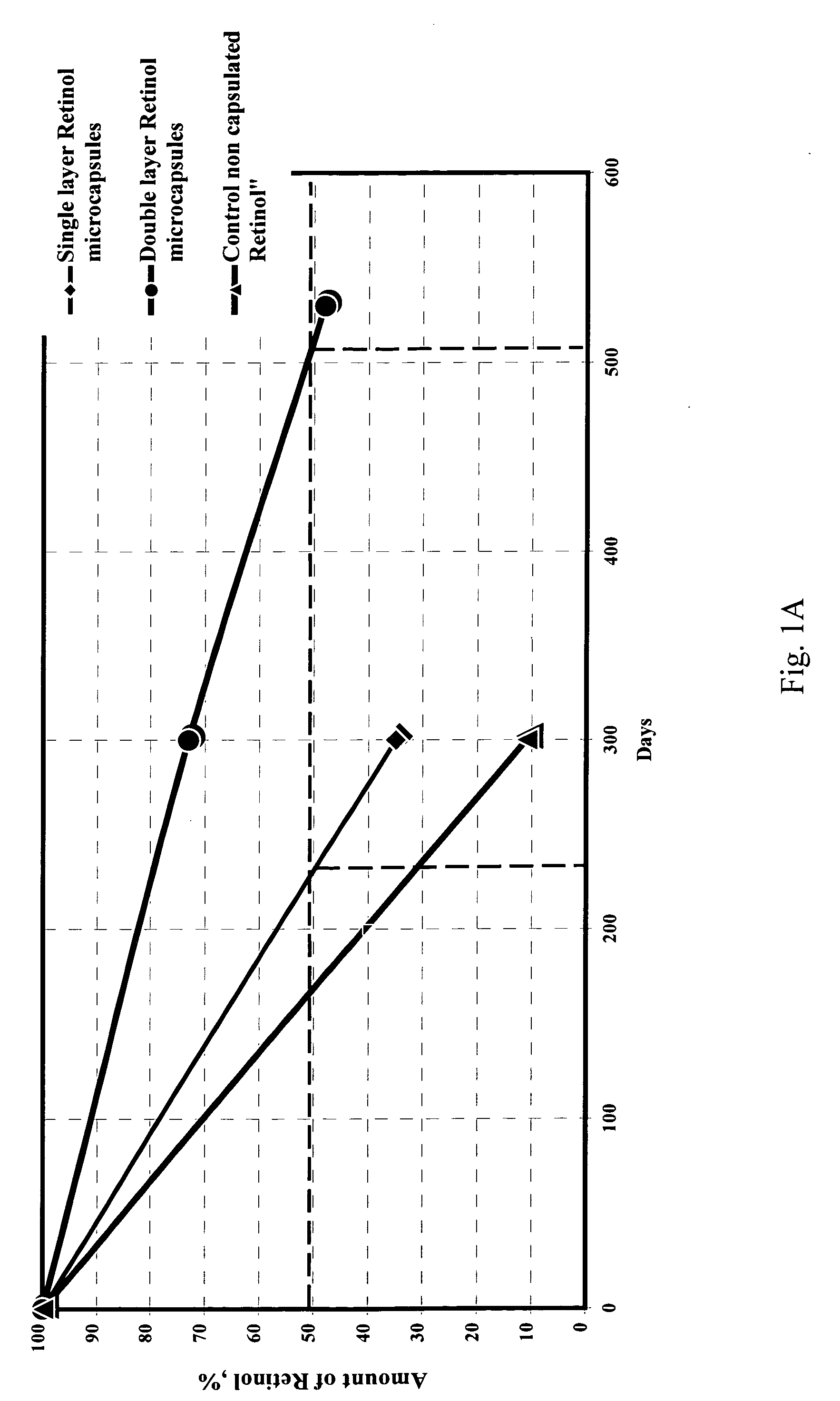Method of microencapsulation
a microencapsulation and active ingredient technology, applied in the field of microencapsulation of active ingredients, can solve the problems of inapplicability of all microencapsulation technologies based on chlorinated solvent systems, insufficient chlorinated solvent content, and limited to certain solvent systems, so as to prevent undesirable release of encapsulated substances and increase the stability of highly sensitive substances
- Summary
- Abstract
- Description
- Claims
- Application Information
AI Technical Summary
Benefits of technology
Problems solved by technology
Method used
Image
Examples
example 1
A Process for Encapsulation of Oil
[0144] An aqueous phase was prepared as follows: 0.5 g of sodium lauryl sulfate was dissolved in 50 ml of tap water saturated with 6 ml of ethyl acetate. An organic phase was prepared by dissolving 0.7 g oil and 0.3 g ethyl cellulose in 5 ml of ethyl acetate. The resulting organic phase was poured into the aqueous phase while stirring and then 100 ml of fresh water were added. After microcapsules were formed during a period of about 3-10 minutes, they were filtered, washed by water and dried at the temperature no higher 20° C. An average diameter of the microcapsules was 70 μm. Efficiency of encapsulation reached was 99%.
[0145] In this way, oils such as Tea Tree Oil, Evening Primrose Oil, Borage Oil and Hippophae Oil, that suffer from a lack of stability due to degradation of its active principles, have been successfully microencapsulated, resulting in microcapsules with increased stability and shelf-life of the oil, preventing development of dist...
example 2
A Process for Encapsulation of Vitamin F
[0146] An aqueous phase was prepared as in Example 1. The pH of the aqueous phase was further adjusted to 3 by citric acid. An organic phase was prepared by dissolving 0.25 g vitamin F in a mixture of natural triglycerides of fatty acids, 0.01 g antioxidant that can be chosen from butylated hydroxyanisole (BHA), butylated hydroxytoluene (BHT) or tocopherol (vitamin E) and 0.74 g poly (methyl) methacrylate (PMMA) in 5 ml of ethyl acetate.
[0147] The resulting organic phase was poured into the aqueous phase while stirring and then 100 ml of fresh water were added. The resulting microcapsules formed were filtered, washed by water and dried at the temperature no higher than 20° C. An average diameter of the microcapsules was 50 μm.
example 3
A Process for Encapsulation of Vitamin E
[0148] The preparations of the aqueous and organic phases were done in the same manner as in Example 2, vitamin E (Tocopherol) rather than vitamin F being dissolved in the organic phase. The resulting organic phase was poured into the aqueous phase while stirring and then 100 ml of fresh water were added. The resulting microcapsules formed were filtered, washed by water and dried at a temperature no higher 20° C. An average diameter of the microcapsules was 40 μm.
PUM
| Property | Measurement | Unit |
|---|---|---|
| outer diameter | aaaaa | aaaaa |
| outer diameter | aaaaa | aaaaa |
| diameter | aaaaa | aaaaa |
Abstract
Description
Claims
Application Information
 Login to View More
Login to View More - R&D
- Intellectual Property
- Life Sciences
- Materials
- Tech Scout
- Unparalleled Data Quality
- Higher Quality Content
- 60% Fewer Hallucinations
Browse by: Latest US Patents, China's latest patents, Technical Efficacy Thesaurus, Application Domain, Technology Topic, Popular Technical Reports.
© 2025 PatSnap. All rights reserved.Legal|Privacy policy|Modern Slavery Act Transparency Statement|Sitemap|About US| Contact US: help@patsnap.com


